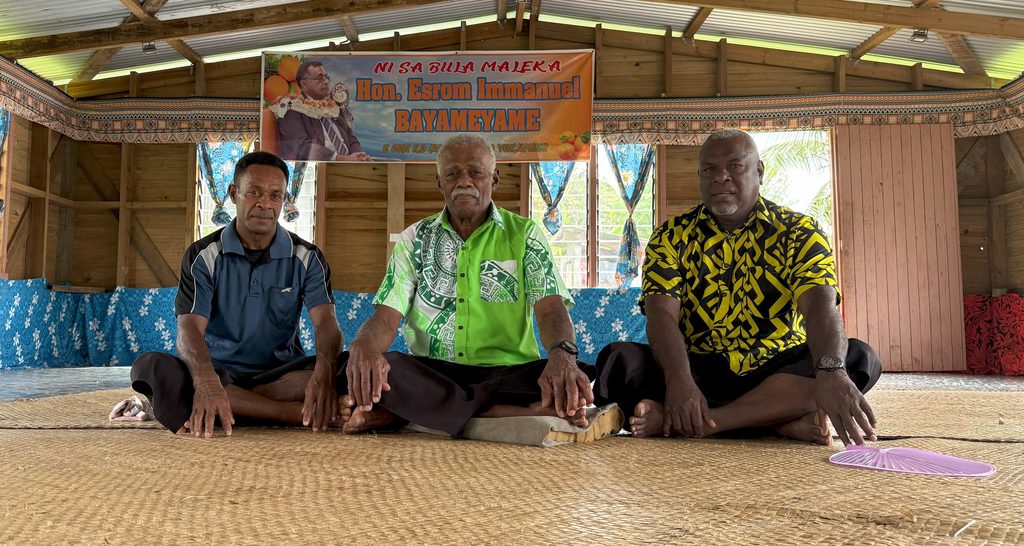Nestled within the lush greenery in the highlands of Naitasiri, and sitting adjacent to the mighty Wailevu (Rewa) River is the quaint village of Navolau.
The Sunday Times team was there a while back to document the account of how the people of the Yavusa Verata came to settle in Navolau.
We sat down with 75-year-old Jonacani Tilalati, an elder of the tribe, who belongs to the Naisauto clan. He explained how his ancestors journeyed across the heart of Viti Levu to finally settle in Navolau.
“The Naisauto clan left their ancestral home and came to settle in Malabe which is situated beside the Wainibuka river and is home to the yavusa Navunidakua.”
An unfortunate turn of events resulted in them leaving Malabe and arriving along the Wailevu river, establishing a number of villages, four to be exact, before they finally settled at the present location at Navolau.
After presenting our i sevusevu to Tilalati and other elders of the village, we were granted permission to visit their ancient village sites and ancestral mounds.
After a strong kava and sigidrigi session that night, we woke up at about 6am, got our gear ready and under the guidance of the village headman Jo, we set off to our first location, the ancient village and sautabu of Navunitavola.
“We could cross the forest and walk there, but that would take time, today we will travel by punt along the river,” Jo said.
As we approached the river bank, I was told the convergence of the Wainibuka and Wainimala rivers forms what we know today as Rewa River. To the people of Yavusa Verata and to the people of Naitasiri, the river was historically known as Wailevu (meaning big river), therefore the term kai Wailevu referred the all those who settled along its banks.
After a five-minute boat ride down the Wailevu, we came to a fresh water stream flowing off the rocks into the river, this was the path we followed to get to Navunitavola.
“We will follow this track and up the next hill sits the sautabu and the village site,” Jo said.
Trekking through the forest, I could not help but notice the fertility of the land, as bananas, yams, breadfruit and various other fruits were in abundance all over.
“Jo, has someone been farming here?” I asked.
“No, these are probably the remnants of what the ancient villagers of Navunitavola had cultivated to sustain them,” he answered.
I was also told that even to this day, no villager, out of respect, picks or eats anything from the grounds in and around the sautabu.
Forty five minutes later, dripping with sweat, we arrived at the village mound of Navunitavola.
It became obvious to me we had entered the boundary of what used to be a mighty village because in front of what must have been the entrance, one must pass by two extremely deep trenches which according to Jo was the first line of defence for the village.
“The first trench was were the bati balavu would be stationed and the second one was were the bati leka would be,” he said.
Bamboo shoots growing at the base of the trenches indicated that sharpened bamboo spears were placed all long it, as an added layer of defence.
As we entered the grounds of the village and sautabu, Jo customarily did a tama as a mark of respect for the ancient chiefs and war lords buried there.
As I stood at an elevated spot in Navunitavola and looked out towards the direction of the Wailevu river, I realised the ingenuity and wisdom behind why the ancestors of the yavusa Verata chose to settle there.
It was situated on an elevated area overlooking the river and therefore they were always aware if enemy war canoes were approaching and also the rich and fertile soil, owed very much to the river, provided for the ideal location to cultivate food for the village.
“There is a particular yam that grows here which has totemic significance for us and the people of the yavusa Navunidakua in Malabe.”
“For us, we are not permitted to harvest these yams and consume them, never. However, for the people of Navunidakua, they can come here whenever they like, even unannounced and harvest the yams and take them. That’s the special relationship we share till this day,” Jo said.
Sure enough, all over the grounds of Navunitavola the yams grew in abundance and it was absolutely mind blowing to hear first hand from Jo the nature of the bonds they share with the people of Malabe in Tailevu.
We exited Navunitavola to now visit the ancient yavu of Nalota which was only just about 20 minutes away but surrounded by thick forest.
As we got closer, we stopped by a majestic baka (banyan) tree which stretched out for at least 50-70 meters and stood right above the Wailevu river, overlooking it like some kind of riverside fortress.
“This is another burial ground which we had been using for years, I can’t remember since when, but the last person to be buried here was my brother,” Jo revealed.
I asked him why they chose to relocate as it was a beautiful location and Jo shared that it was decided by the elders to move the burial ground closer to Navolau because of the distance and accessibility.
After paying our respects to the departed, we moved on and we got closer to Nalota. Tropical flowers like makosoi and jale were in bloom and filled the air with a rich and sweet smelling aroma, making the journey more enjoyable.
As we entered Nalota, we were greeted by two towering vesi trees. I observed the size of the two giants and it seemed as it they had been there since time immemorial. Their roots were about two meters thick and looked very much to me like boa constrictors or anacondas.
“How long have these trees been here? Do you know?” I asked Jo.
“This vesi tree in particular must have had some kind of spiritual significance, because next to it is the yavu of a bure kalou (spirit house),” he said.
Right beside the bigger of the two vesi trees was a mound of stones upon which the ancient bure kalou sat.
I was absolutely stunned but it all made sense as I mulled over it, because trees and sacred groves were very much part of ancient indigenous Fijian spirituality.
As we made our way back to the Wailevu river, I thought about the other secrets the next two sites of Navakalewa and Dravuni may hold.
Part 2 Next Week
History being the subject it is, a group’s version of events may not be the same as that held by another group. When publishing one account, it is not our intention to cause division or to disrespect other oral traditions. Those with a different version can contact us so we can publish your account of history too — Editor.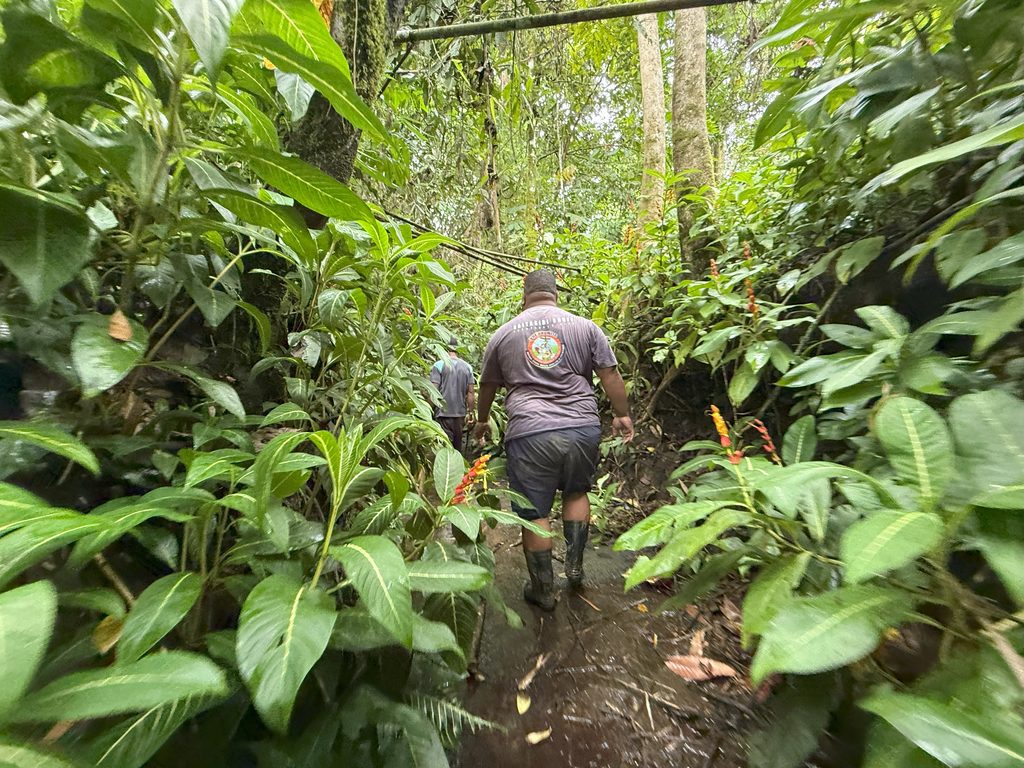
Trekking through the lush vegetation towards Navunitavola.
Picture: ALIEFERTI SAKIASI
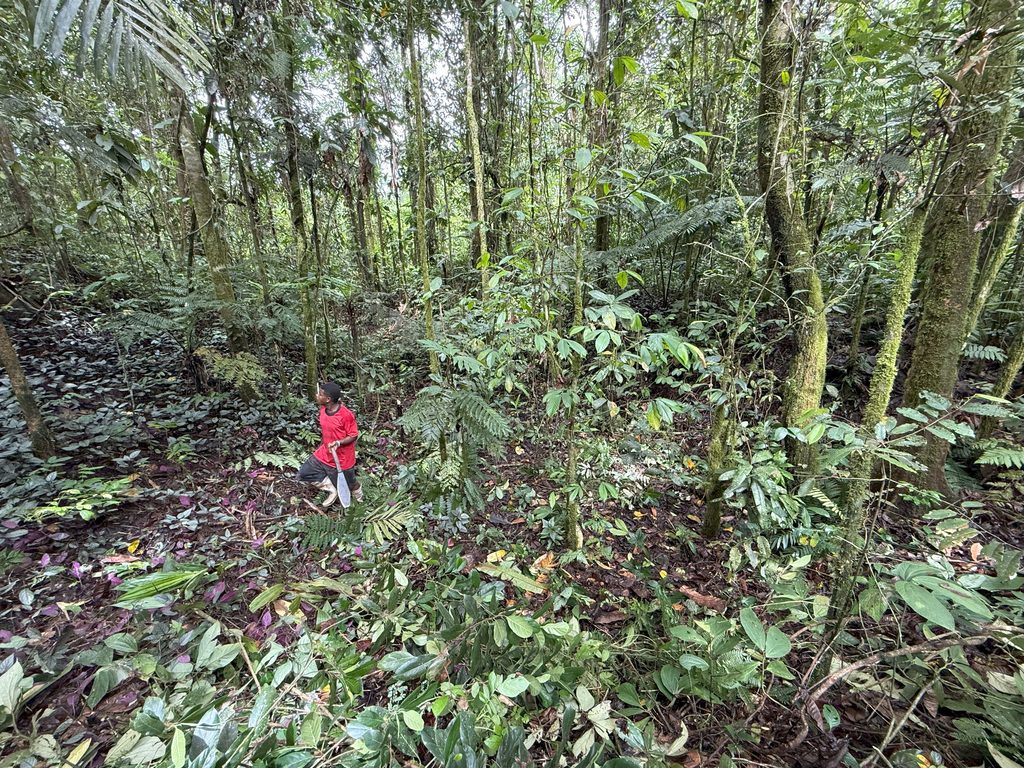
The ancient yavu and sautabu of Navunitavola.
Picture: ALIEFERTI SAKIASI

Jo (right) on the spot under the banyan tree that used to serve as Navolau’s first burial ground. Picture: ALIEFERTI SAKIASI
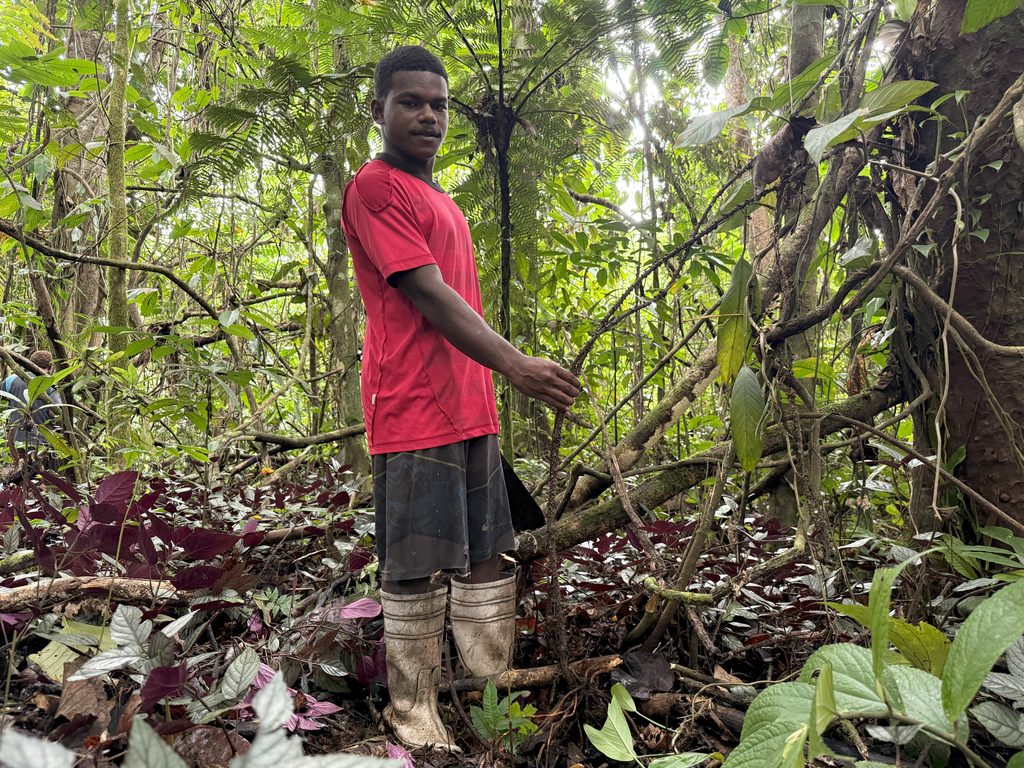
A Navolau youth holds up the stem of a yam plant growing on the foreground of Navunitavola.
Picture: ALIEFERTI SAKIASI
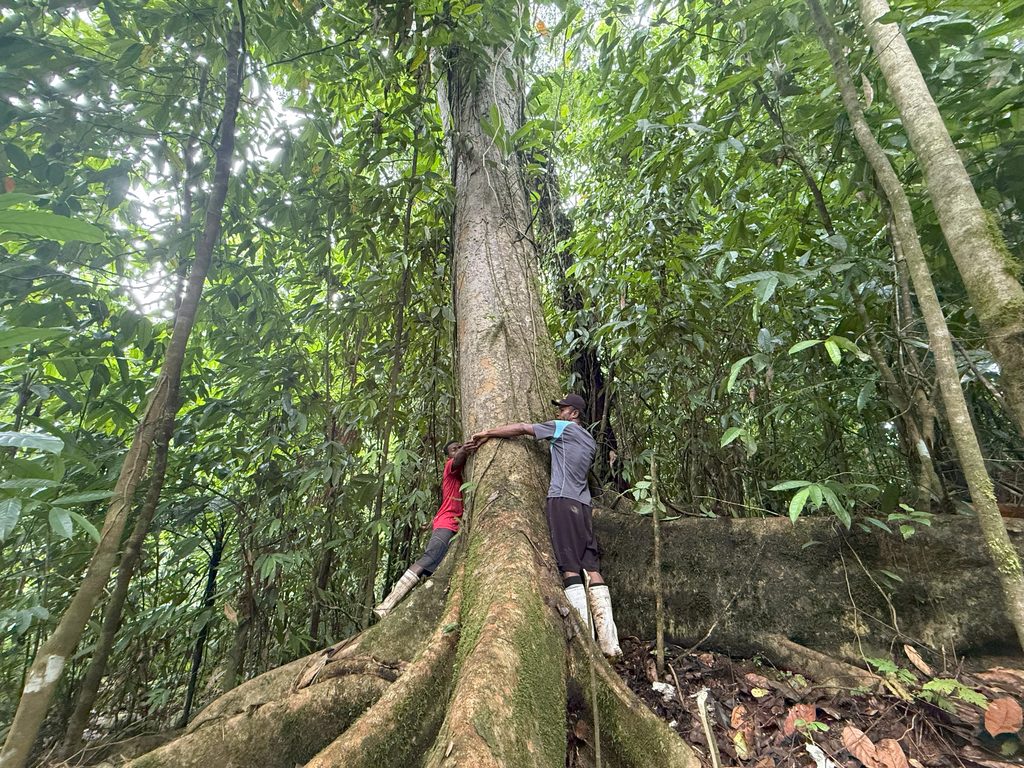
The ancient vesi tree that marks the spot close to where the ancient bure kalou once stood.
Picture: ALIEFERTI SAKIASI
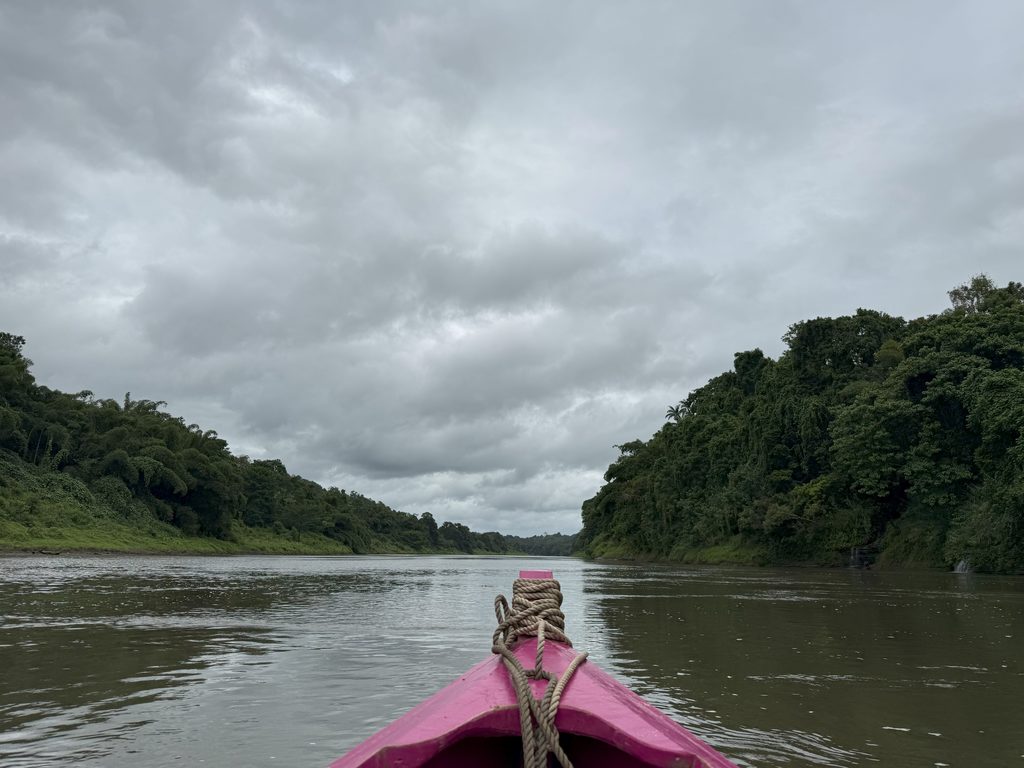
Travelling along the Wailevu (Rewa) River. Picture: ALIFERETI SAKIASI

